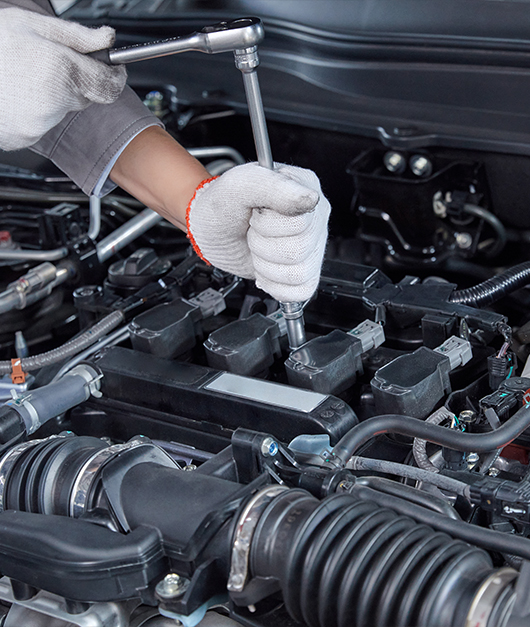Durable Material: Made of high-quality materials, it ensures durability and stability and can maintain performance even under the most demanding working conditions.
Perfect grip: Ergonomic handle design provides a comfortable grip, reduces hand fatigue, and maintains optimal condition even during prolonged work.

3/8"DR. METRIC SOCKET WRENCH TOOL
Specification
|
METRIC |
SAE |
L(mm) |
WEIGHT(g) |
|
MM |
LNCM |
||
|
6 |
1/4” |
28 |
28.8 |
|
7 |
9/32” |
28 |
24.2 |
|
8 |
5/16” |
28 |
26.9 |
|
9 |
11/32” |
28 |
25.8 |
|
10 |
3/8” |
28 |
23.9 |
|
11 |
7/16” |
28 |
26.3 |
|
12 |
15/32” |
28 |
24 |
|
13 |
1/2” |
28 |
28 |
|
14 |
9/16” |
28 |
37.5 |
|
15 |
19/32” |
28 |
40.2 |
|
16 |
5/8” |
28 |
46.1 |
|
17 |
11/16” |
28 |
55.8 |
|
18 |
23/32” |
28 |
74.6 |
|
19 |
3/4” |
28 |
65.8 |
|
20 |
25/32” |
28 |
87.8 |
|
21 |
13/16” |
28 |
82.5 |
|
22 |
7/8” |
28 |
104 |
|
23 |
29/32” |
28 |
123 |
|
24 |
15/16” |
28 |
121 |
Packaging & Delivery
Send Us a Message

3/8"DR. METRIC SOCKET WRENCH TOOL
The Solution For All Industries And Factories
Fuxin hardware tools is a set of industrial enterprise product design, development, production and sales. Advanced design concept, advanced production technology and testing equipment and scientific management, Continuously develop high quality and high standards of quality products.
As China 3/8"DR. METRIC SOCKET WRENCH TOOL suppliers and wholesale 3/8"DR. METRIC SOCKET WRENCH TOOL factory, our company produces 1/4, 3/8, and 1/2 series of sleeves, quick wrenches, tool sets and other products. Products are mainly exported to Europe, America, the Middle East, Southeast Asia, and other advanced countries and the domestic market. Companies adhere to the quality of survival, service for the idea, Dedication to providing our customers with quality products and service attitude.
Look at the new and old customers who come to guide and negotiate! We will be higher, more refined, more sophisticated products to return many new and old customers.
Professional
Available for OEM and ODM, design based on our professional engineer team and mould factory.
Quality & Cost
We have our own machining workshop. So we can directly provide high-quality products.
Certificate Of Honor
News
-
32-piece 1/2" auto repair socket tool kit: portable and efficient, helping emergency repairs
The 2-piece 1/2" auto repair socket tool kit adopts precision forging technology as a whole. The 32 components cover common automobile bolt sizes and specifications, fully meeting the needs of various...
READ MORE -
1/4"DR deep socket wrench tool set, convenient storage, more durable
This deep socket wrench tool adopts a compact design. The compact design makes this deep socket wrench easier to store and manage. In many toolboxes or workbench spaces, compact tools can effectively ...
READ MORE -
Essential for all-around repairs: 12-piece quick ratchet handle socket set (1/2 inch), compatible with a variety of bolt shapes and deep operations
These 10 sockets cover a range of sizes from 8mm to 24mm, which can meet most common repair needs. Common bolts and nuts usually have standard sizes, so the sockets can easily adapt to most standard n...
READ MORE
Industry Knowledge Expansion
How do the durable materials of metric socket wrench tools ensure their performance under harsh working conditions?
The durable materials of metric socket wrench tools ensure their performance under harsh working conditions through the following aspects:
1. Material selection: High-quality materials such as high-strength alloy steel or chrome vanadium steel are used, which have excellent wear resistance, corrosion resistance and impact resistance.
2. Heat treatment process: Through precise heat treatment processes such as quenching and tempering, the hardness and toughness of the material are enhanced to enable it to withstand high loads and extreme temperature changes.
3. Surface treatment: Chrome plating or other surface treatment technologies may be used to provide an additional layer of protection against corrosion and wear, while reducing friction and increasing the service life of the tool.
How does the ergonomic handle design help users maintain their best condition during long working hours?
Ergonomic handle design helps users maintain good performance during long work hours by:
1. Shape design: The shape design of the handle mimics the natural gripping posture of the human hand, reducing pressure points on the hand and wrist, and providing a more natural gripping experience.
2. Material application: The handle may use soft, flexible or non-slip materials such as rubber or soft plastic to provide a better grip and cushioning effect, reducing hand vibration and fatigue.
3. Size and weight: The size and weight of the handle are carefully designed to accommodate different users' hand sizes and strengths, ensuring comfort and control during long-term use.
How do the durability and ergonomic design of metric socket wrench tools work together to improve work efficiency?
The durability and ergonomic design of metric socket wrench tools work together to improve work efficiency include:
1. Reduced tool replacement: Durable materials ensure that the tool can maintain its performance after long-term use, reducing the frequency of tool replacement due to damage.
2. Improve work continuity: The ergonomic handle design reduces hand fatigue, allowing users to work longer without frequent breaks.
3. Improve work quality: Comfortable grip and optimized torque transmission help users control tools more precisely, improving work quality and precision.
4. Enhance user satisfaction: Durable tools and comfortable use experience can improve the overall satisfaction of users, thereby stimulating higher work motivation and efficiency.

 Search
Search







